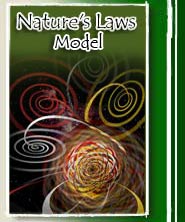|
1 |
Page 2
[<< Previous]
The language of the Constitution, although
certainly influenced by Indigenous interests, remains
articulated in the language of the dominant culture. So the
Commission's approach in Partners, while fruitful and
necessary as it is to discuss Indigenous sovereignty, is not
one that most Aboriginal peoples would advocate.
The theory that Indigenous peoples are "national
minorities", implying they have been incorporated into the
Canadian state, is also not how Indigenous people
characterize themselves.
This illustrates the problem of the Indigenous voice
being heard: in order to participate in the dialogue with
political liberals about the significance of Indigenous
rights must filter out the spiritual dimension which lies at
the heart of Indigenous views on sovereignty and translate
them into the language of rights.
This is what Indigenous peoples have been trying to do
since the time of contact, but the translation process
itself is the problem. Indigenous voices are not recognized
as legitimate when they stand on their own; Indigenous
philosophies must be expressed in the language of policy in
order to be deemed useful (Turner 64-65).
In Oman's analysis of the Gitxsan and Wet'suwet'en
ownership and jurisdiction case, we find another argument
reflecting the Indigenous viewpoint:
To sum up, the tactics used to demonstrate the validity
of Gitxsan and Wet'suwet'en claims within the dominant legal
order were to show how the common law of Canada, and the
Royal Proclamation each affirms the existence of Aboriginal
rights. The plaintiffs did not argue that the common law or
the imperial legal instrument served as the source of
Gitxsan and Wet'suwet'en ownership and jurisdiction.
In order to accomplish the second task of demonstrating
that the claim was justified in terms of their own First
Nations law as well, the Gitxsan and Wet'suwet'en
strategists decided to provide the court with the
interpretive tools it needed to recognize the validity of
that assertion, and in fact, to understand the nature of the
Gitxsan and Wet'suwet'en conception of recognition itself.
These tools consisted in the building blocks of the Gitxsan
and Wet'suwet'en conceptual framework, their traditional
ways of knowing and experiencing.
In order to induct the trial judge into an appreciation
of the legitimacy of their claim in their own eyes, the
plaintiffs tried to help him to see the world from their
point of view. They did this primarily by showing the court
the interrelationships among different aspects of their
conceptual framework - by illustrating and explaining the
connections among their oral systems of recording and
witnessing their history, their connection with the land,
and the role played by reciprocity in their "economy of
affection." In each case, the explanation led back to the
multi-faceted institution of the feast, which serves in
Gitxsan and Wet'suwet'en societies in slightly different
ways as the central site of spiritual, economic, political,
social, educational, and legal interaction (Gisday Wa and
Delgam Uukw 1989, Mills 1994).
By disclosing the nature of the feast systems of the
Gitxsan and the Wet'suwet'en, the plaintiffs tried to
demonstrate that the mainstream Eurocentric conceptual
framework that divides up realms of human experience into
separate and unrelated categories such as law, religion, and
history does not "fit" with the way that most Gitxsan and
Wet'suwet'en people understand their lives.
By insisting upon being true to their own conceptual
framework throughout the court case, the Gitxsan and
Wet'suwet'en participants tried to show the judge how the
imposition of mainstream conceptual categories of their
beliefs could only conceal and distort the true meaning of
their claim. In so doing they invited the court to bring to
the judicial process a cross-cultural understanding, which
gave equal validity to the Aboriginal worldview and did not
rely upon eurocentric experience and thinking as the
universal reference point. Put another way, the court was
being asked to participate in the decolonization of the
legal mind as it articulated a principled basis for the
adjudication of the constitutional rights of Aboriginal
peoples [emphasis mine] (Jackson 1994).
Aboriginal and treaty rights gained protection in the
Canadian Constitution of 1982 with the provision that "The
existing aboriginal and treaty rights of the aboriginal
peoples of Canada are hereby recognized and affirmed". A
series of Supreme court decisions has given some definition
of how these rights are to be interpreted under Canadian
law, but there has never been a negotiated agreement between
Aboriginal nations and Canada on the nature of these rights.
Each court decision addresses a portion of the larger issue,
raising a host of new questions. The Marshall decision of
1999 affirming Mi’kmaq rights under a 1760 treaty to earn a
moderate living from the Atlantic fishery did not put an end
to disputes about how resources are to be shared. (Oman 245).
A similar kind of argument is being made by George
Erasmus:
Gaining recognition of Aboriginal rights in the courts
and entrenchment in the Constitution have been critical to
restoring Aboriginal peoples as active agents in directing
our collective lives. Where land claims settlements have
proceeded, they have opened possibilities for social,
cultural, political and economic renewal. But there have
been some unfortunate side effects of the rights agenda. An
American Indian law professor has written that "Like other
minority groups in our society, tribal Indians must
demonstrate a convergence of their interests with dominant
group interests in promoting their rights." This is
difficult because "the rights they claim seem so alien and
opposed to the dominant society’s legal, political, and
cultural traditions". (George Erasmus, Vancouver, 2002).
|






